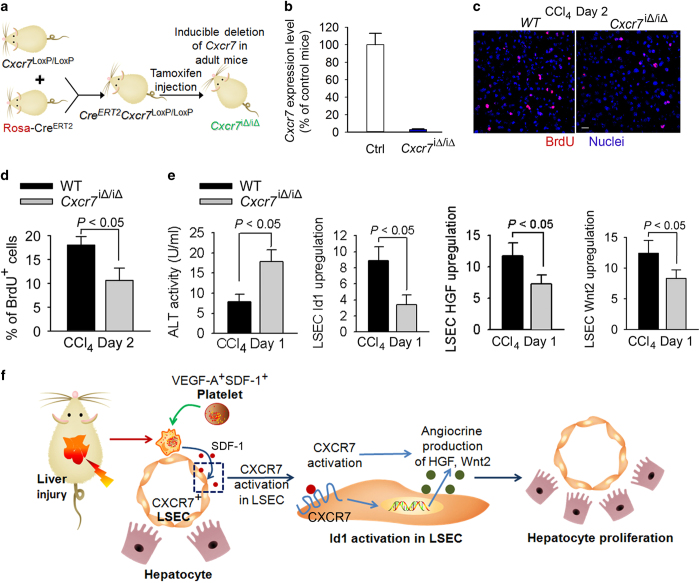Figure 6.
After CCl4-induced liver injury, CXCR7 stimulates angiocrine-mediated hepatic regeneration. (a, b) Mice harboring loxP site-flanked Cxcr7 were crossed with Rosa-CreERT2 and treated six times with tamoxifen injection (250 mg kg−1) to induce the deletion of Cxcr7 in adult mice (Cxcr7iΔ/iΔ).15 Transcriptional level of Cxcr7 in the liver is shown in b; N=6–9 mice per group. (c, d) Inhibition of SDF-1 signaling in LSEC abolished liver regeneration after CCl4 injury. In Cxcr7iΔ/iΔ mice, the decrease in cell proliferation was determined by staining for BrdU incorporation; N=6 mice per group. Scale bar, 50 μm. (e) Increased hepatic damage in Cxcr7iΔ/iΔ mice after CCl4 injury was associated with abrogated induction of Id1-Wnt2/hepatocyte growth factor (HGF) angiocrine pathway; N=5 mice per group. (f) Platelet-dependent activation of LSECs leads to the generation of hepatogenic angiocrine factors. Upon hepatotoxic injury, activated platelets generate SDF-1 to turn on Id1 pathway in LSECs, resulting in angiocrine production of HGF and Wnt2 that initiates hepatocyte propagation and liver repair.

